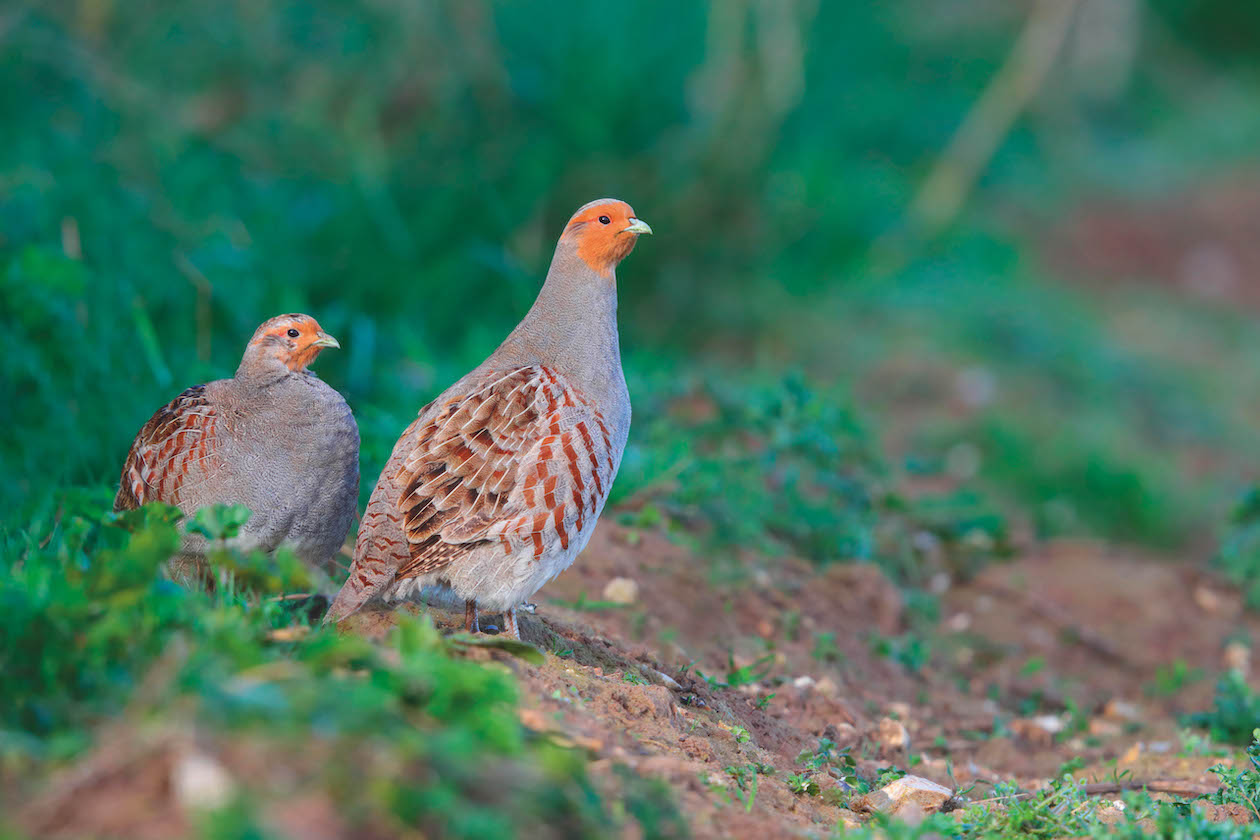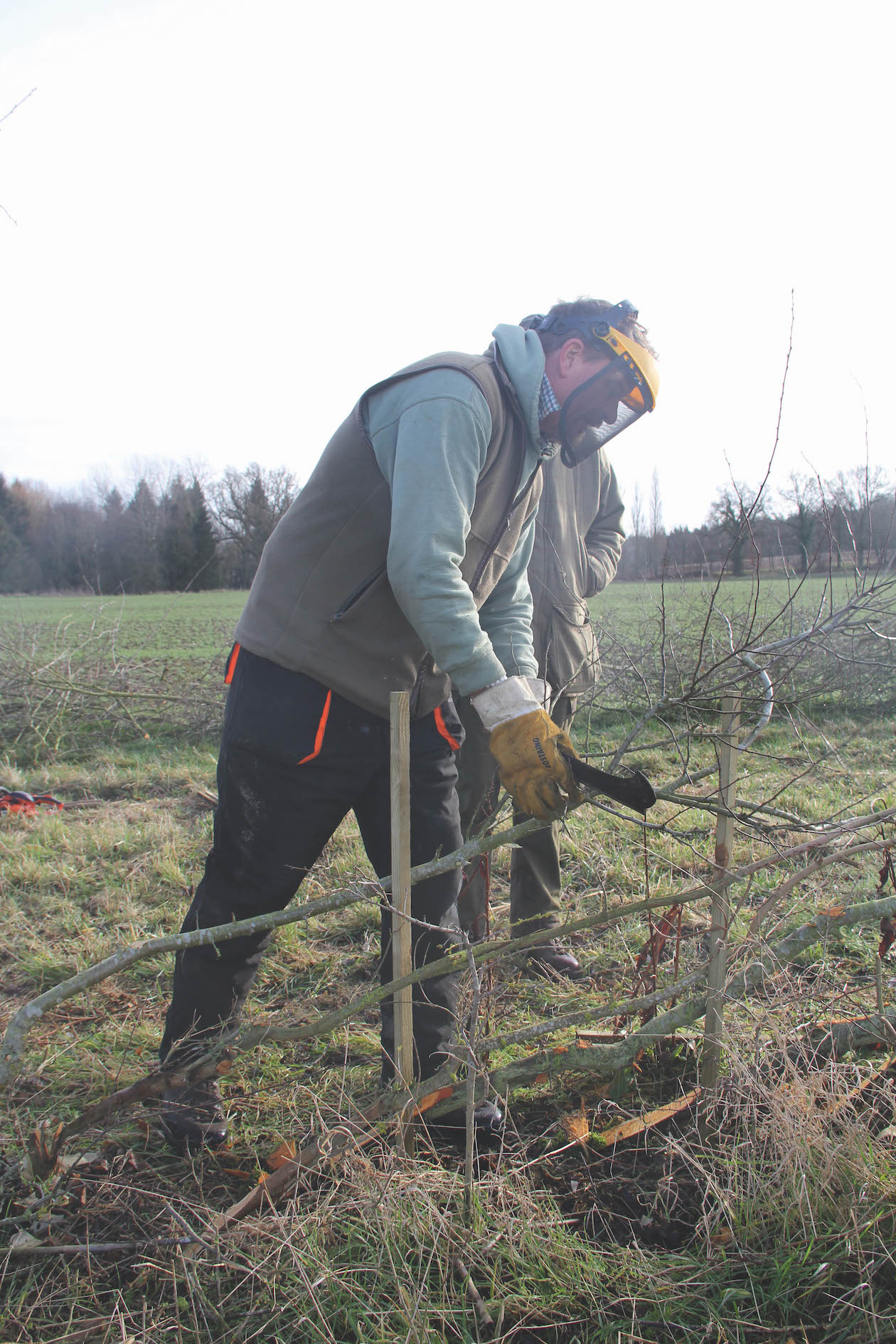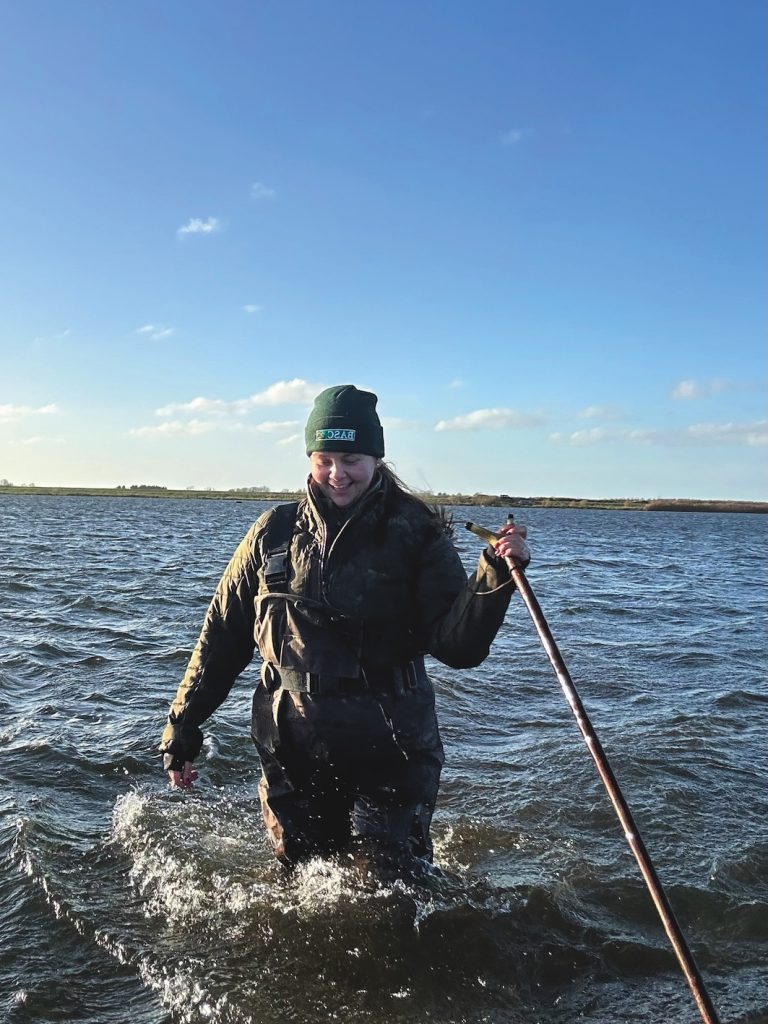Win CENS ProFlex DX5 earplugs worth £1,149 – enter here
Grey partridge nesting: what makes the perfect habitat?
 JGM477 A pair of Grey Partridges (Perdix perdix) on farmland in Norfolk, UK
JGM477 A pair of Grey Partridges (Perdix perdix) on farmland in Norfolk, UK
I parked the truck underneath a gnarled old oak that crookedly stands at the end of a hedge, a mix of elm sucker, maple and hawthorn. My eyes were on the bund that lay 50m away, made by piling subsoil from a pond creation into a 2m-high ridge on to which tussock grass and wildflower seed had been sown two autumns ago. The imperfect mound made perfect grey partridge nesting habitat. Greys adore broken ground.
On one side of the bund lay a grass track cutting through a rough meadow; on the other, a field of well-tilled beans, their emerald shoots poking through the tilth. I twiddled the reticule on my binos, and the clumps of burdock and ribwort plantain, Timothy grass and budding pink campion became clear. My gaze shifted to the biscuity clay and snagged old flints beneath the greenery. After minutes of study, my eyes began to water and arms to ache. In the wobbling image, I finally found what I was looking for.
Standing like a guardsman, a cock partridge, aware of my presence, had decided it was time to get a better look at this interloper. Two feet to his right in the crumbly soil, his wife crouched, keeping her head down while he took in the risks. I put the Steiners on the truck’s passenger seat and picked up my notebook and biro, adding a downward dash to 11 other downward dashes. Flea Barn’s spring grey partridge count was completed for another year. (Read how the grey partridge can survive and thrive.)
Grey partridge nesting
The spring partridge count is no exact science. Greys are adept at hiding and some will doubtless go unnoticed. Equally, the cock bird you counted on Monday may be dead by Tuesday, killed in the open by a sparrowhawk; the hen you studied on Wednesday a mere bundle of feathers on Thursday, having been snatched from cover by fox, cat or stoat.
Suffice to say, we know that as of mid-April, Flea Barn boasted 12 pairs of grey partridges — all of which were living on parts of the farm where, if the weather is kind and the predator control is effective, the food and habitat provision should be sufficient to enable them to bring off broods.
Our methodology for counting was straightforward. While Ed Nesling trundled on his sprayer filled with magnesium — like Miracle-Gro but for grown-ups — he watched, hawklike, for pairs. Any he saw were noted down on his GPS system. Areas where the sprayer didn’t go, I covered on foot and jotted my findings down in the low-tech notebook.
Three seasons ago, when we commenced this project, we had four pairs on this farm of a little under 500 acres. Last year we spied seven, and this year’s 12 are testament to the effectiveness of making small changes to farming practice. These changes made large improvements to insect life and habitat. Ally these to a robust predator control programme and the doughty dozen were the result. (Read more on how your shoot can help to save the grey partridge.)
Yet this conservation work did not reduce Ed’s ability to farm effectively — thanks in no small part to the utilisation of Countryside Stewardship grants, which financially take up some slack of land lost to production. The beetle banks and cover blocks are designed so that they fit in with farm machinery: at 30m wide, these ribbons of habitat and insect-rich flora are the same width as, and thus avoid, the sprayer’s boom. Grass margins that enable machinery to move around the farm were widened and floristically enhanced. This may not be the bucolic pre-war landscape that armchair conservationists clamour for, but it’s both a practical and an effective one. The grey partridge doesn’t care a fig for aesthetics.

Hedges provide habitat for grey partridges and Richard is busily reinstating them
Obsessive
Down the road, Adam Steed had completed his count at Red House Farm too. Ten years into his campaign to bring grey partridge nesting back to Suffolk, he boasts 27 pairs. He cites bringing more farmland into stewardship as a major influence in boosting numbers. Adam’s success is down to the same factors seen at Flea Barn, the three-legged stool of conservation. It also helps that he is a dynamo; an obsessive, some may say, of our native lowland gamebird.
As he ruefully admits, “I have given up seeing my mates and playing football, all for the partridges.” His hopes for the future are high, as neighbouring farmers are similarly embracing stewardship and planning ahead for the arrival of Environmental Land Management schemes. Predator control is now practised widely over his boundaries and contracted farmland is no longer solely farmed — instead, habitat blocks and margins are made part of the general agricultural mix. Farm clusters are talked of, plans are made, shelved, then dusted off once more. Doubtless, in the near future, the clusters will take off and individual farms like Adam’s and Flea Barn will cease to be oases, becoming interconnected landscapes. When that does happen, the grey partridge’s future will be all the more secure.
It is not all sunlit uplands, however. The villages that edge both Flea Barn and Red House Farm are expanding. Fields become brown then brick, new housing is springing up in box after box of mock-Georgian four-bedroomed ‘splendour’. This brings with it more pressure for the grey partridge nesting — walkers and their unruly dogs, and domestic cats that roam freely in areas that have never before known such dangers. The new residents may well not understand the fragility of the landscape. Nor will many accept the importance of Larsen or DOC traps, or snares that they see as garottes rather than essential tools. Adam’s night-time forays with a rifle become police incidents, thanks to a phone call from a concerned, uninformed incomer.
Over at Patrick and Brian Barker’s farm, some three miles from Adam as the crow flies, they too have topped the high 20s for their partridge count. The Barkers have been in the regenerative farming game for the longest of all around these parts.
Their grey partridge population rises and then inexplicably falls, despite their endeavour and the award-winning array of habitat they provide. Thus is the way with greys. Whatever the very best efforts of farmers, keepers and land managers are, there are no guarantees that a strong count in spring will mean abundant coveys in autumn.
Dedicated grey partridge conservationists
Human pressures, wet weather in Royal Ascot week, a neighbour spraying insecticide, campaigns against predator control, soaring costs of farm inputs or changes in focus at Defra are all factors that could paint the grey’s future black rather than rosy. Yet for all that, a growing band of dedicated grey partridge conservationists struggles on. Up in Northumberland, I am told, things are heading in the right direction, largely thanks to farmers moving away from block cropping. In Gloucestershire, too, spring counts are reported to show an upward trajectory.
This passion for partridges from the likes of Ed, Adam and the Barkers is the key to seeing a meaningful return of the grey partridge. Who knows if they will ever reach the sort of numbers to make for a shootable surplus, as seen on a rare few Norfolk and Sussex estates? We can but try.
Related Articles
Get the latest news delivered direct to your door
Subscribe to Shooting Times & Country
Discover the ultimate companion for field sports enthusiasts with Shooting Times & Country Magazine, the UK’s leading weekly publication that has been at the forefront of shooting culture since 1882. Subscribers gain access to expert tips, comprehensive gear reviews, seasonal advice and a vibrant community of like-minded shooters.
Save on shop price when you subscribe with weekly issues featuring in-depth articles on gundog training, exclusive member offers and access to the digital back issue library. A Shooting Times & Country subscription is more than a magazine, don’t just read about the countryside; immerse yourself in its most authoritative and engaging publication.







